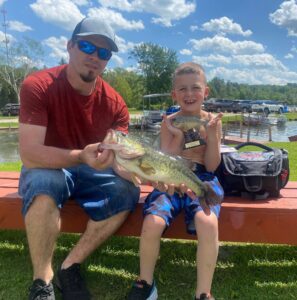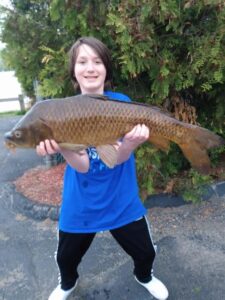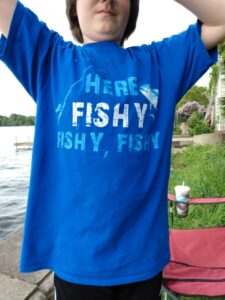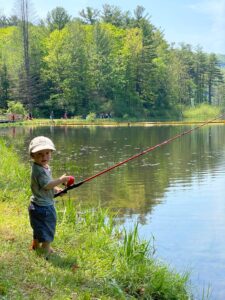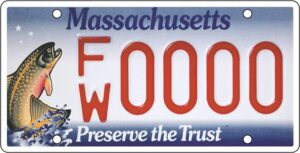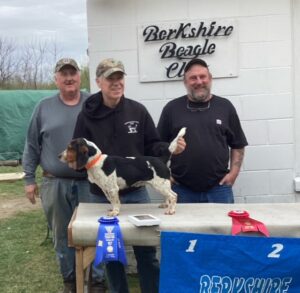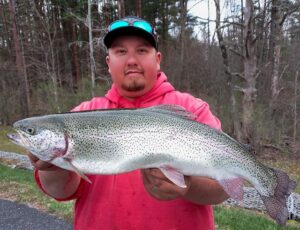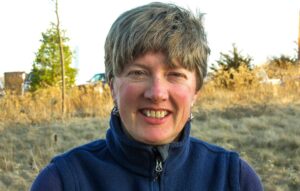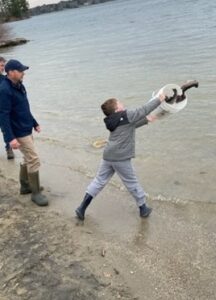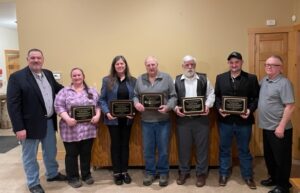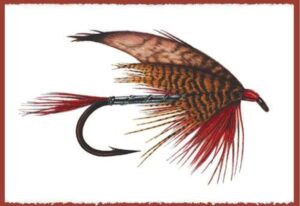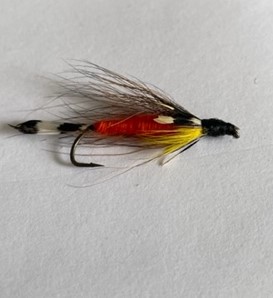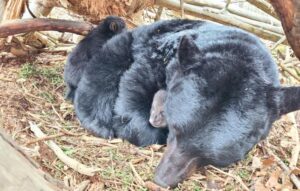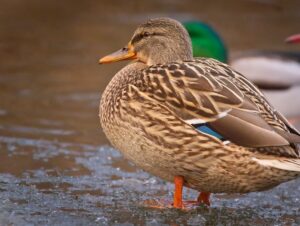Carp Palooza is a carp fishing derby that ran on Pontoosuc Lake from 3:00 pm on June 25 until midnight, June 26. Two person teams vied for money and trophies. Some of the trophy titles were: Best Combined Weight, Largest Mirror Carp and the Dink Master Award for the smallest carp caught. Derby rules state that all fish must be weighed and released alive
According to Carp Palooza organizer Joshua Christman, it was a great event with 39 teams participating. Some of them traveled 3 hours to participate even though it was very hot. Special thanks go to Steve Bateman for helping to promote the event.
Christman said that it was non-stop fish weighing from his boat. He gave a huge thank you to his friend Brandon Murray of Pittsfield who also weighed fish from his boat. “Without his help it would not have been possible to keep up”’ said Christman
First place was won by Dan Conant and Mark Dimond with a two Carp weight of 30.6 lbs. Payout for first place was $750. Second place was won by the team of Austin Harvender and Dylan Ladoucer with a two Carp weight of 30.00 Lbs. They went home with $400. Third place was won by Jay Pesci and Scott Rozzay Dickey, and they went home with $200.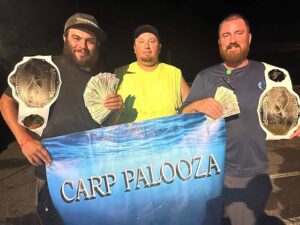
The Lunker Pool payout was $350, and was also won by the first- place team Dan Conant and Mark Dimond. They ended up with $1,100.00 in prizes.
The largest Mirror Carp award went to Robert Houghtlin and Payton Quinn. They won two $25 Dicks Sporting Good’s gift cards and two Carp nets. Even the smallest Carp won a prize. Rebecca Parlato won the Dink Award with a 6 lbs carp. She won a unique trophy and a $25 gift card to Dicks Sporting Goods.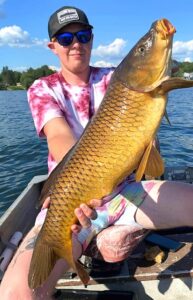
There was another winner – The Jimmy Fund. Some $740 was raised for it and the funds were given to Steve Bateman to remit. Those funds, when added to the funds raised in the Harry Bateman Fishing Derby totaled over $10,740! Thanks to the anglers who participated, to Joshua who organized the event and to all the helpers, contributors and sponsors.
Sponsors of the Carp Palooza Derby are as follows: Private Donations from Christopher Parlato, Becki Grimsley and Ron Mazzeo Jr, Haddad’s (Pittsfield), Wal-Mart (Pittsfield/North Adams), RSI Signs (Pittsfield), Dick’s Sporting Goods (Pittsfield), Undisputed Belt.com, Wristband bros.com, VulgrCo.com and Sticker company.
Josh Christman did a yeoman’s job in putting this derby together. Incidentally, if his name sounds familiar, he has won numerous MA Freshwater Fishing Awards. He was named MA Adult Catch and Keep Angler of the Year in 2016, 2020 and 2021.
Joshua is also owner of Christman Charters.
Antlerless Deer Permit applications due by July 16
If you want to hunt antlerless deer this fall, you need an antlerless deer permit, sometimes called a doe permit. If you apply for a permit by the July 16 deadline, you then must check back after August 1 to find out if you have been awarded the ability to purchase the permit.
Hunters can apply online using MassFishHunt on a computer or smartphone. You need a valid hunting or sporting license to apply for an antlerless deer permit. There is no fee to apply; a $5 fee is charged only if you are awarded a permit during the instant award period.
The instant award period begins August 1 at 8:00 a.m. and ends on December 31. Your odds of being awarded a permit are the same regardless of when you check your permit status. You can check the status of your permit through MassFishHunt.
Because this is a new system, I recommend that you not wait until the last minute to apply. You never know if you will encounter a glitch of some kind.
River Flowers
Author Robert (Bob) Romano has come out with a new book entitled River Flowers.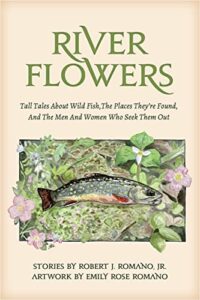
He is author of at least 6 prior books, most of which I have reviewed in this column, simply because I like his writing. Most of his books feature stories about fictional people and the entire book follows what happens to them. They are always based in Western Maine commonly known as the Rangely area.
River Flowers is different in the sense that there are 22 individual short, unrelated stores. But they are all in a way linked together because of where the stories take place, – the Rangely area of Maine.
Romano did not divert from a talent which I really like. Although they are fictional stories with fictional characters, the surrounding scenery of which he writes is far from fictional. When he wrote about the dark forests, the trillium and trout lilies along the pathways, smelling the balsam and spruce and observing the tea -colored streams you know he’s been there, done that. (Actually, Bob should know what he is writing about for he and his family has owned a seasonal cottage there for 40 years).
So, how do you know? If you have ever visited and fished that area you have smelled the aroma of those woods and walked the damp pine needled forest floor, yourself. Not every author can capture and convey those surroundings, but Bob does it perfectly.
Most of his chapters keep you wondering where he is going with the story up until the last page, sometimes the last paragraph.
This book is not for the living room end/coffee table, but rather for your night stand. The chapters are just long enough to get through and then drop off to sleep. No, I assure you the book is not so boring that you fall to sleep before finishing a chapter. But when you nod off after reading a chapter, it almost feels like you are bringing the balsa, spruce and the sound of the flowing rivers into your dreams.
Another thing which strikes me about this book is that even though all ages of readers should enjoy it, it is especially appealing to older (or shall we say experienced) anglers. Not sure if intended, but he writes about things that older anglers, those who have been around a while and are inching toward the riverbend, can relate. In one story, I loved how an angler was thrashing through a dense forest trying to get away from the angling crowds heading toward the sound of a bubbling stream somewhere downhill, hopefully containing wild brook trout. I’m not sure if our younger anglers do that anymore.
But I think the younger generation of anglers will also enjoy this book. It is a great example of how the old anglers used to fish and how the old- time outdoor writers used to write.
One thing which puzzled me about the book was is its name –River Flowers. What’s with that? It wasn’t until nearly the end of the book that he reveals what it is all about. Pretty slick. Clue – it has something to do with Henry David Thoreau.
Having read all of Romano’s books, I find this one his best. I’ve already started reading it again.
It is a soft-cover 217- page book containing 22 stories with artwork by his daughter Emily Rose Romano. It is published by West River Media and costs $25.
Pick one up for grandpa, he’ll enjoy it.
Happy 4th
Here’s hoping that everyone has a safe and enjoyable Fourth of July. As you undoubtedly know, our country has gone through a tough couple of years, with Covid, an insurrection, mass shootings, ridiculous gas and grocery prices and more.
No, we are not a perfect nation, at least not for everyone, but let’s work on that.
Speaking for myself, there is no other place on earth where I would rather live. How about you?

